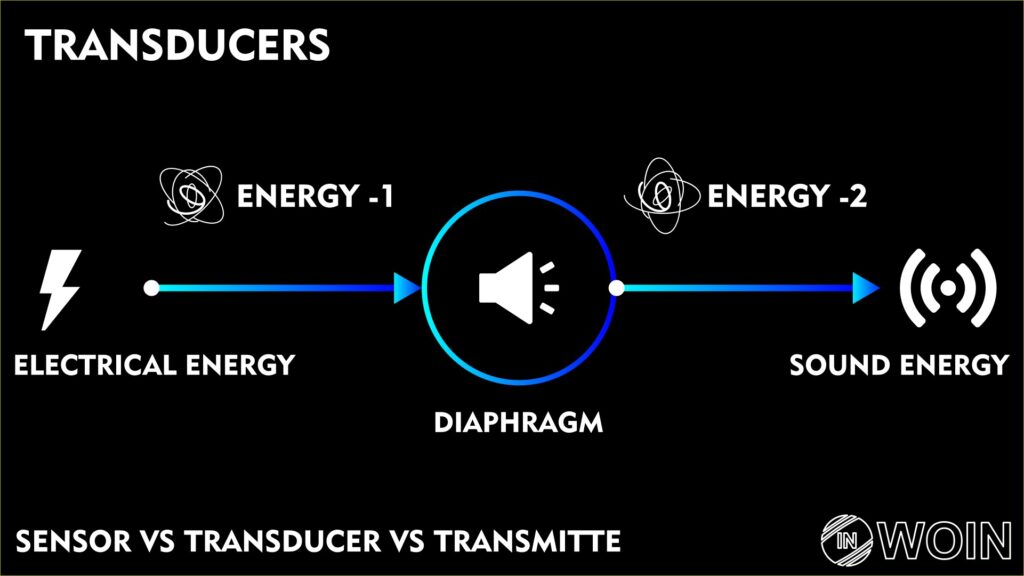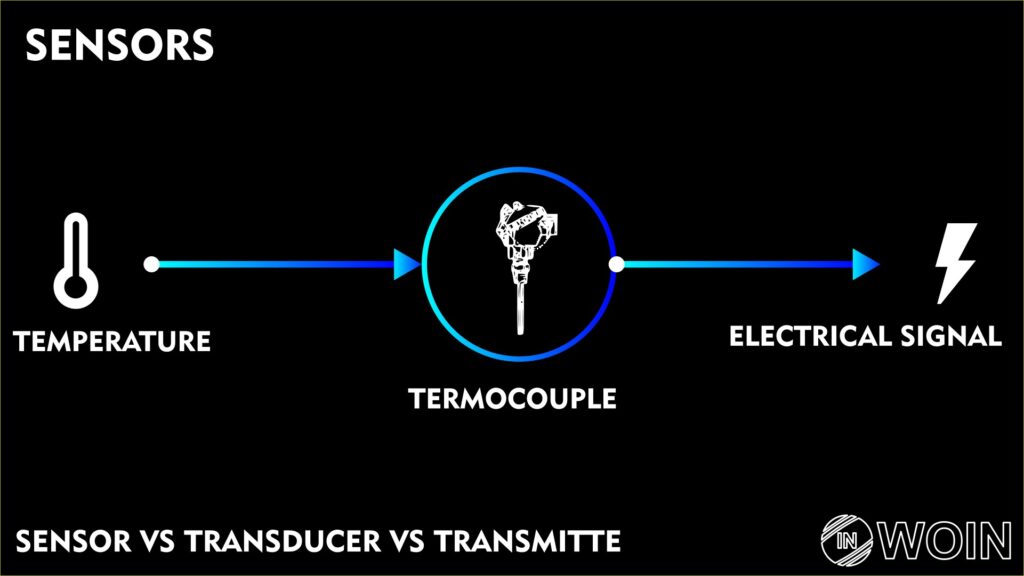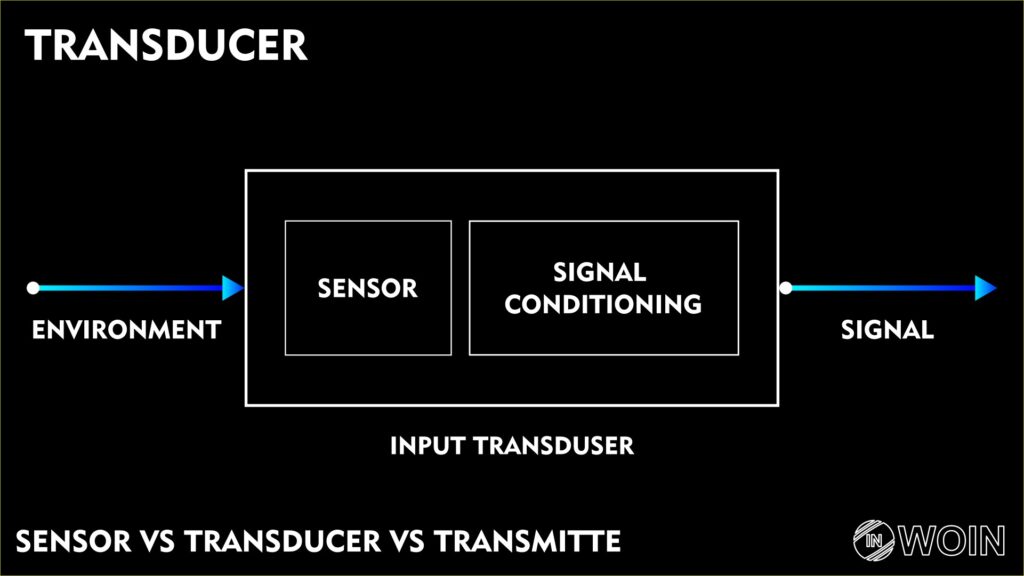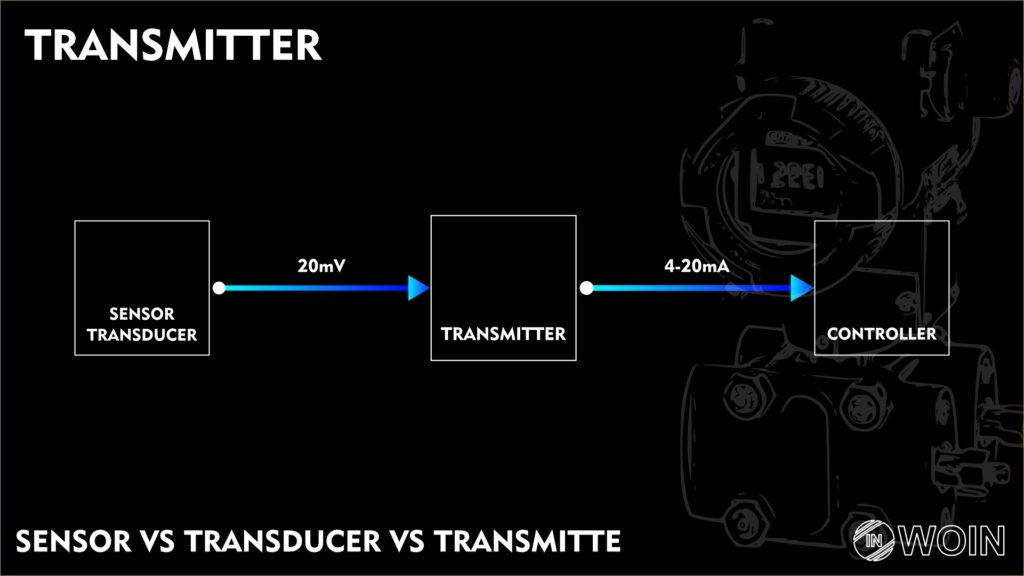Introduction
In this post, I will try to completely resolve your doubts on What is the difference between Sensor, a Transducer, and Transmitter. For teaching this topic I will use practical examples so you can fully understand this topic.
If you go through tons of articles, videos, and resources on the internet and are still confused between Sensor, Transducer, and Transmitter then you are in the right place.
By using practical examples, I will try to teach you how you can differentiate between Sensor, Transducer, and Transmitter.
Why is there so much confusion between a Sensor and a Transducer?
Sensors and Transducers have similar functions so this is understandable that confusion will be created whenever you have to distinguish between Transducers and Sensors.
You take these statements into your mind before you try to distinguish between sensors and transducers.
All Sensors are Transducers but all Transducers are not Sensors
Definition of SENSORS
Basic Understanding of Sensor and Transducer?
What is Transducer?
Transducers are energy-converting devices that convert one type of energy into another.
The output of the Transducer has specific relationships with input Quantity. Like Pressure, Transducers convert Input Pressure into Electrical Output.
Transducers are energy converting devices that convert one type of energy in to another.
Definition of TRANSDUCERS

What is a Sensor?
Sensors are devices that receive signals from the surrounding environment and react according to them. The signal must be some kind of energy like heat, light, motion, and Chemical Reaction.
The sensor directly contacts the physical environment and responds according to the physical variables to be measured.
Sensors are devices that Made direct contactION with physical Variable. And give specific output according to physical Variable.
Definition of SENSORS

How to distinguish between Sensors and Transducers?
As per the statement, All Sensors are Transducers but all Transducers are not Sensors to understand this topic, we divide Transducers into two parts.
Type of Transducers?
- Input type Transducers
- Output type Transducer
Input type Transducer
Input type transducer takes any form of energy as input and converts it to another type of energy.
And input type transducers come with the combination of sensor and signal conditioning circuits, that’s why we become confused between Sensors and Transducer. Let’s learn by example!
Examples
The microphone is an Input type of Transducer microphone diaphragm that is used as a sensing element to sense the sound wave and by using a Diaphragm sensor we can able to convert sound energy into electrical signals.
Take example an RTD is a sensor because it is not converted Heat energy into others but it is sensing the Temperature and changes its Resistance. So, we add Wheaton Bridge as an excitation circuit to convert Variable resistance into Voltage signals.
The combination of Sensor (RTD)and Signal Conditioning (Whiston Bridge) circuit is now called a transducer because it converts thermal energy into an electrical signal.
In the case of thermocouples, we are called sensors and transducers because thermocouples convert thermal energy into electric energy directly.
But it is also directly interacted with the physical environment so, more generally, a Thermocouple is the temperature sensor.
Because we cannot use a thermocouple signal to display temperature directly but we need to further process the output signal of a thermocouple.
We take the example of a pressure transducer and it is an input type transducer. There are different types of sensors that are used to convert pressure signals into electrical signals.
like strain gauges, Variable capacitors, and Metal films these all are types of sensors used in pressure transducers to detect pressure.

The thermistor is a sensor but when we take the thermistor as part of the circuit in an electric thermometer that measures temperature so we called the electric Thermometer is the transducer.
It is also true for thermocouples and RTD so as per conclusion we see that the raw signal from the sensor is processed and converted into another type of signal that is directly related to physical variables by using a Transducer.
A compass is an Input type of transducer that takes the earth’s magnetic field as input energy and by using a magnetic Needle as a sensing element compass convert the earth’s magnetic energy into Motion energy or you can say deflation torque
A glass thermometer is a type of Input transducer and it uses mercury as a sensing element to sense the Heat energy by using mercury as the sensor, a glass thermometer converts thermal energy into potential energy.
Strain gauge and RTD is called transducer one’s excitation circuits are connected to RTD or Strain gauge that concert resistance into an electrical signal. but Strain gauge and RTD individually are sensors or you can say without excitation circuit.
Output type Transducer
Output type Transducer is not taken input from physical variable but is responsible for converting input energy into the physical variable. Like Heater is output type transducer that converts electric energy into Thermal energy and we know Thermal energy Physical Quantity.
You are mainly confused between Sensors and input transducers but in output type transducer we do not become confused because the output transducer does not sense the environment but it transmits signals to the environment. Because we know sensors are always input from the environment.
so, the statement becomes true that Transducers are not always sensors. Take example a Light bulb is a transducer because it converts electrical energy into light energy.
The heater is also a transducer that converts electrical energy into thermal energy.
Example of Sensors and Transducer
What is a Transmitter?
The transmitter comes with combined circuitry to convert sensor/transducer signal into standard signals like 4-20mA, 1-5V, and others.

Here is now the role of sensors and transducers comes into play. For example, sensors give initial measurements if required initial measurements will process by the transducer, and by helping transmitters this measurement signal Amplifies and Standardize and convert into standard signals that directly feed into the controller.
EndNote: –
I hope you understand the difference between sensors, Transducers, and Transmitters. If you have any doubts then please comment below and I will surely help.
And if you know which are the organizations that make standards for industries then check out my latest post on this topic


